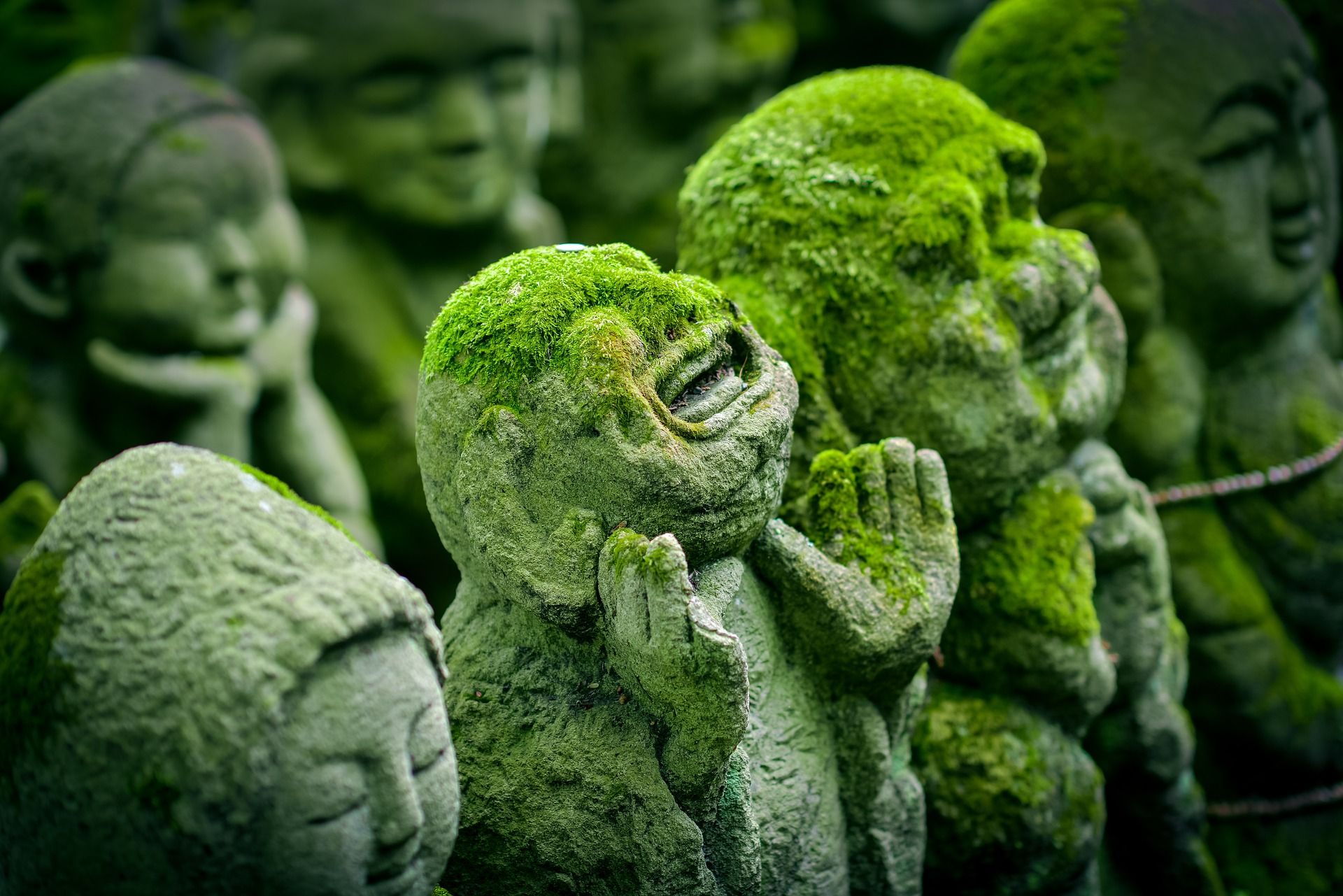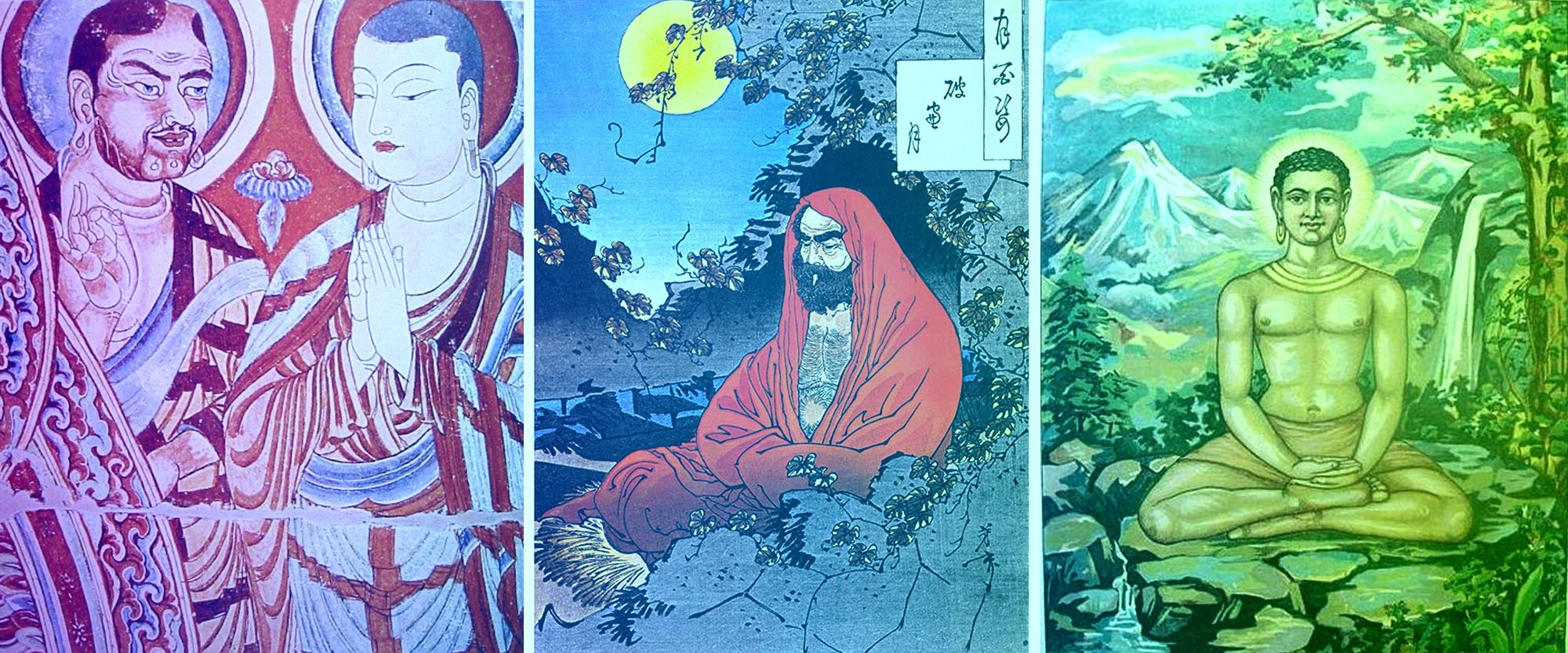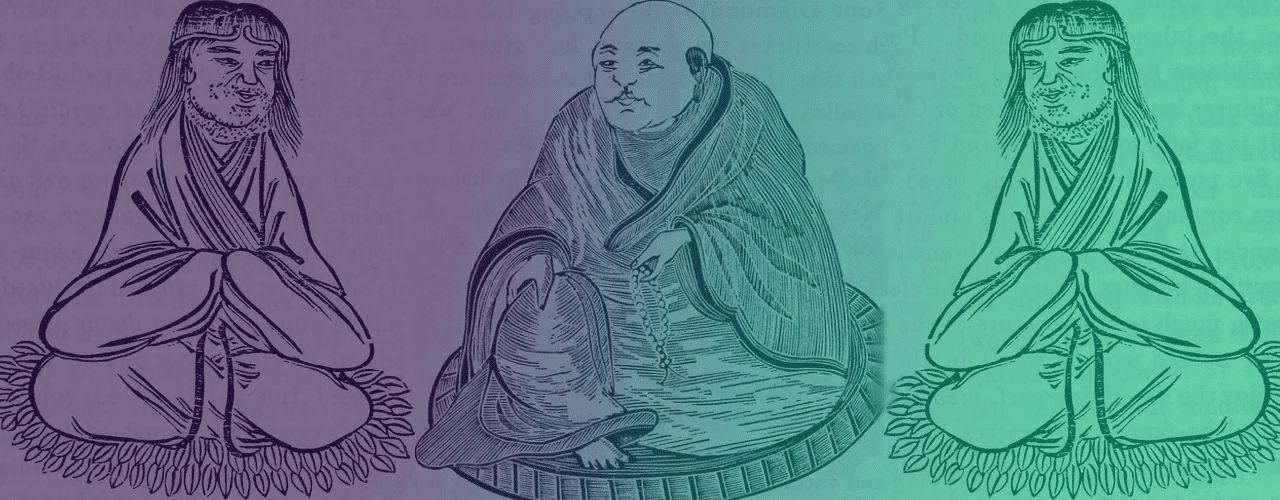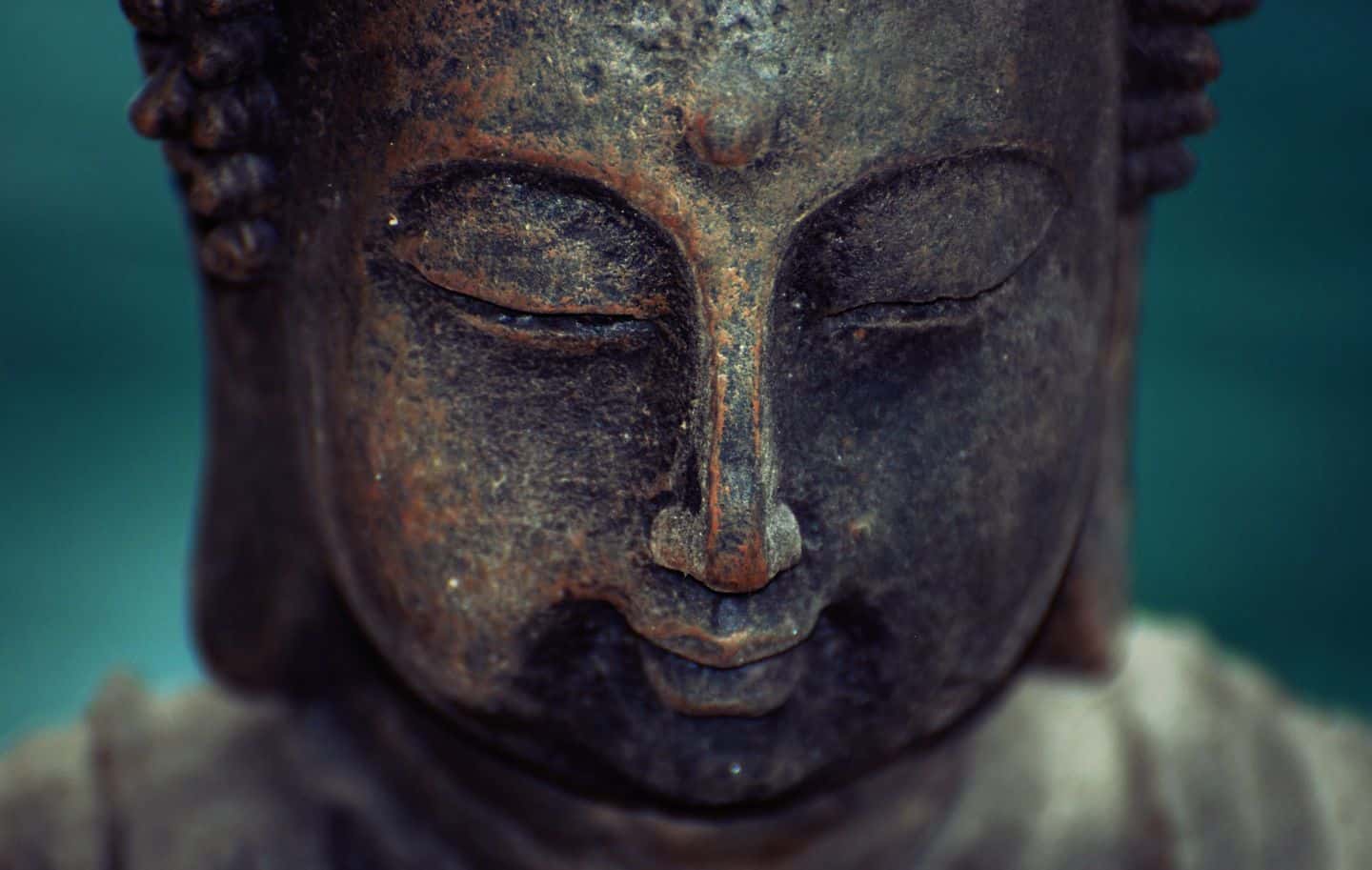Jon Brooks • • 12 min read
Best of HighExistence: Top 15 Articles On Meditation and Mindfulness

The simple art of mindfulness meditation can be broken down into the two categories of philosophy and practice.
The way we typically learn about the philosophy of mindfulness meditation is via a person who practices a lot then gains insights which they articulate to us in the form of philosophy. The Buddha, for example, practiced diligently for six years, attained his enlightenment, then spent the rest of his life traveling and teaching others how they could attain the same kind of awakening.
Digesting the philosophy of mindfulness meditation can be very satisfying and liberating, but there must also be an element of practice which accompanies the learning. Spiritual teachers who’ve attained a “higher” state of consciousness try to translate their experience of the world to those who are confined to “lower” states, but this glimpse into the enlightened mind is not enough to take the reader all the way to Nirvana.
Bruce Lee said:
“Its like a finger pointing away to the moon. Don’t concentrate on the finger or you will miss all that heavenly glory.”
Lee is saying that we should not focus too much on the instruction which points the way. We should instead practice the way.
The Buddha compared his teachings to a raft:
“In the same way, monks, I have taught the Dhamma [dharma] compared to a raft, for the purpose of crossing over, not for the purpose of holding onto. Understanding the Dhamma as taught compared to a raft, you should let go even of Dhammas, to say nothing of non-Dhammas.” [Thanissaro Bhikkhu translation]
Even the Buddha’s teachings must be “let go” of eventually. Teachings then are useful guides along the path, but practice is paramount.
I love books. In fact the entire HighExistence team are huge readers, and we’ve churned out many well-loved book articles. But as legendary Thai Forrest Monk Ajahn Chah said:
The value of Dhamma isn’t to be found in books. Those are just the external appearances of Dhamma; they’re not the realization of Dhamma as a personal experience. If you realize the Dhamma, you realize your own mind. You see the truth there. When the truth becomes apparent it cuts off the stream of delusion.
So with that said, here are the best HighExistence articles ever written on the philosophy and practice of mindfulness meditation. But use them as a raft, and never disregard practice.
The Philosophy of Mindfulness Meditation
The following articles will help to keep you motivated on the spiritual path, offer guidance when you feel lost, and give you a unique glimpse into states of higher consciousness.
1. 50 Alan Watts Quotes to Give You a Glimpse of Enlightenment
“For there is never anything but the present, and if one cannot live there, one cannot live anywhere.”
— Alan Watts
Alan Watts is one of the most iconic figures in Western spirituality. He has an amazing ability to deconstruct some of the most complicated concepts in Zen Buddhism and translate them for our unenlightened minds. Reading this list of quotes from Watts will get you thinking about the world differently.
If you like these quotes, I suggest you pick up a copy of The Way of Zen.
2. 25 Rare Quotes on Enlightenment to Spark a Quantum Leap in Your Consciousness
Enlightenment is beyond the connection to me and mine; it’s past the illusion that you know who you are. In our world it is considered advantageous to have a positive self-image, but the wisdom of Buddhism is to let go of images altogether. There is a great deal of suffering in self-esteem. It’s nice when it’s around, but it comes and goes, utterly out of our control. This practice is headed in the direction of letting go of everything you think you are. Then you’re doing the same things other people are—eating rice and drinking tea—but you’re beginning to get a taste of what it is like to be free and clear, wholehearted and effortless.”
— Larry Rosenberg, Breath by Breath: The Liberating Practice of Insight Meditation
Learning about enlightened states from people who’ve experienced them is very useful on our spiritual journeys. By listening to different accounts of what enlightenment is and is not, we can detect the various commonalities between them to guide us in our own practice. This article offers up a wide-ranging group of thoughts on enlightenment which you can use as signposts along the path.
3. 26 Scientifically Proven Superhuman Benefits of Mindfulness Meditation
A study conducted at the University of Montreal compared 13 Zen meditators, all of who had at least 1,000 hours of practice, with a control group of non-meditators to see whether regular mindfulness meditation practice would effect the perception of pain.
They tested the subject’s pain response using a calibrated heated rod on their calfs. The zen meditators experienced overall 18% less pain.
— From article, 26 Scientifically Proven Superhuman Benefits of Meditation
Let me ask you something. Have you meditated every day for at least 10 minutes for the last 2 years (or since you found out about meditation)? My guess is that you have not. Mindfulness meditation is a difficult habit to stick to. We know we should do it consistently, even for a short amount of time, but there always seems to be other things we could be doing instead. I wrote this article for those who struggle to find the motivation to practice mindfulness meditation. It contains many staggering studies on this ancient form of mind training.
4. 60 Hours of Meditation in 5 Days: How The Whole World Became The Black Mirror of My Ego

The last thing I wanted was to be alone with myself. I was going through a phase of relationship distress (which will make for an amazing future article, when this particular story has played itself out), and my mind was going crazy with weird possibilities of being left alone—ironically the exact body-mind feeling I was now voluntarily subjecting myself to. I wanted to go home, fix what I perceived as threats to my current and future well being, and set things back in the proper order of my ego-constructed reality. Meditation could wait; there were more urgent matters to attend to now.
— From article, 60 Hours of Meditation in 5 Days: How The Whole World Became The Black Mirror of My Ego
This article is Martijn Schirp’s record of his time in a very strict Zen Buddhist retreat in Costa Rica. It is an inspiring story of how meditation helped Martijn to break through his ego-constructed reality and get a glimpse of The Truth. Meditation is not just for developing superhuman traits. Meditation is also a unparalleled tool for cultivating wisdom and the ability to live more skillfully.
5. 10 “Spiritual” Things People Do That Are Total Bullshit

“It is what it is.” or “The universe is already perfect.” or “Everything happens for a reason.” can all function as excellent justifications for never doing much of anything and never really examining one’s behavior. I’m not commenting on the truth or un-truth of the above statements. I’m just saying that if you’re consistently hours late for appointments, if you frequently neglect your close personal relationships, and your roommates can’t count on you to pay rent, you might want to stop telling yourself, “Whatever man, reality is an illusion anyway.” and start becoming someone others can depend on.
— From article, 10 “Spiritual” Things People Do That Are Total Bullshit
This is one of the most popular HighExistence articles of all time. The post is as hilarious as it is relevant. So many of us fall into the trap of using spirituality as a cover up for acting in non-spiritual ways. I would recommend everyone with an ounce of interest in mindfulness meditation give this a read.
6. 2 Simple Buddhist Techniques for Amplifying Positive Feelings and Softening Negative Moods

Andre van der Braak in his book Nietzsche and Zen distinguishes the Western philosophical tradition as being a “truth-seeking paradigm,” whereas the East prioritizes practice over doctrine and can be seen as a “way-seeking paradigm”—orthodoxy vs. orthopraxy. In broad terms, one could argue that the West preoccupies itself with thinking, analysis, and rationality as tools for finding truth, and the East focuses more on intuition and emotion for finding the way towards authentic practice.
In this article, we set out to find the way toward practicing a vibrant existence by adding Buddhist tools to our emotional toolkit. One such tool which also highlights the cultural and philosophical attitude separating the East and West is the practice of meditation.
— From article, 2 Simple Buddhist Techniques for Amplifying Positive Feelings and Softening Negative Moods
In this article, I outline a super simple method I learned from the voice of Headspace, Andy Puddicombe, on making yourself feel better when things aren’t going your way. Try it out.
7. 7 Zen Stories That Might Just Give You a Glimpse of Enlightenment

A certain Zen teacher celebrated with his students, drinking sake and whiskey until after midnight, then rose next morning before dawn. Peevish, he expressed annoyance that his American students had not risen in time to do zazen [Zen meditation] before morning service.
When they murmured that their sluggishness might be accounted for by all the drink, the teacher snapped, “Sake is one thing, and zazen is another! They have nothing to do with each other!”
— Zen Story #6: The Hangover
Zen stories are often enigmatic, puzzling, and seem to point toward some profound spiritual truth that is not immediately graspable. But it is in the contemplation of Zen stories that the spiritual benefits can be found. Zen stories usually have a twist or punch that defies conventional thinking, and they often imply that if one were enlightened, these stories would make complete sense.
8. How to (Not) Give a Fuck Like a Zen Master

The sage seems to care on some level about the well-being of all sentient beings, having lost the capacity to maliciously harm any life-form. And yet the sage also, supposedly, has no preferences, attachments, desires or expectations.
These two items seem almost self-contradictory, paradoxical. Possessing compassion would seem to be the same as having a preference, or desire, for good will, peace, non-violence, right? And aren’t those Zen Buddhists and Taoists supposed to, like, have no preferences and desires?!
— From article, How to (Not) Give a Fuck Like a Zen Master
One of the biggest dilemmas in Zen exists between the philosophy of “going with the flow” and the desire to affect positive change in oneself and the surrounding world. Many of us get into mindfulness meditation to help improve ourselves, but as we progress we learn that the art of mindfulness meditation resides in attachment and non-grasping, even towards images of ourselves as enlightened beings. This article addresses the issue perfectly and will help you find the right balance.
The Practice of Mindfulness Meditation
These articles will focus on an essential part of the spiritual path: the actual practice of mindfulness meditation. You will learn tips and techniques to get the most out of your practice.
9. 9 Mindfulness Exercises to Make You More Focused Than Eckhart Tolle on a Limitless Pill

“The truth is, just having a concentrated mind — that’s not getting lost in thought — is just intrinsically pleasurable. It’s intrinsically blissful. It’s the emotional bass note of all the good drug experiences.”
— Sam Harris, Neuroscientist
Arguably the most powerful thing you have is your attention. What you focus on becomes your life. The problem is, most of us are pulled by our thoughts in directions that don’t serve us. When we sit to meditate, we are essentially aiming to increase our attentional muscles. Over time we can better see the kinds of thoughts our mind arbitrarily conjures up. When you consistently train your attention in this way, you will have less compulsive thoughts simply because you will see them for what they are: just thoughts. From here they lose their power.
10. Can’t Stand Meditation? This Technique is For You.

Do you consistently struggle to sit for extended periods of time to meditate? If the answer is yes, give this short article a read. This post provides a “fun” way to meditate that will help you get the habit started, which is often the hardest part.
11. 20 Beginner Meditation Tips to Deepen Your Practice and Calm the Waters of Your Mind

1. Sit for just two minutes.
This will seem ridiculously easy, to just meditate for two minutes. That’s perfect. Start with just two minutes a day for a week. If that goes well, increase by another two minutes and do that for a week. If all goes well, by increasing just a little at a time, you’ll be meditating for 10 minutes a day in the 2nd month, which is amazing! But start small first.
— From article, 20 Beginner Meditation Tips to Deepen Your Practice and Calm the Waters of Your Mind
This post contains some fantastic meditation tips for beginners or for people who aren’t consistent with their practice.
12. How to Practice Mindfulness to Gain Enlightenment: The Ultimate Illustrated Guide

There’s often this idea that happiness or Enlightenment or whatever you want to call it is this thing out there, over there, in some other place. What you start to realize when you practice intensively is that it’s actually moment to moment. Enlightenment, happiness, peace of mind, is here in this moment. If we experience this moment, not only now but in the next moment and the next moment and the next moment, then we have stability of Enlightenment, of happiness, of peace of mind. So if you have awareness 24/7, and it’s moment to moment, and you develop consistency and stability of that, then you always have what you always wanted, and it was always here all along.
— Andy Puddicombe
There are three components to training the mind: the approach, the practice, and the integration. What you are studying in this article will help you get a better handle on all three components. This ultimate guide is packed full of tips on how you can become more mindful, track your meditation and mindfulness progress, and upgrade the quality of your consciousness.
13. How to Deepen Your Meditation to Achieve Altered States of Consciousness

The mind has two main functions, ‘doing’ and ‘knowing’. The way of meditation is to calm the ‘doing’ to complete tranquility while maintaining the ‘knowing’. Sloth and torpor occur when one carelessly calms both the ‘doing’ and the ‘knowing’, unable to distinguish between them.
— Ajahn Brahmavamso
This post is targeted for people who already have a meditation practice but find that it’s a bit sloppy. Perhaps you find your mind wandering a lot or your motivation dwindling. In this event, what should you do? The author of this post teaches you a method of breaking the time you spend practicing mindfulness meditation into hundreds of small fragments. If you you train yourself only to diligently practice for the time each fragment lasts, you will have a much easier time maintaining your attention on the present moment. Read the article to see this method explained in clearly in diagrams.
14. 6 Magnificent Meditation Illustrations To Improve Your Practice
I sometimes find that images and art are a very useful to help an idea or lesson stick in my mind. The six illustrations contained in this post provide very quick but insightful teachings on meditation that you will find easy to remember. If you like, go the extra step, print off some of the images, and put them in the same room you meditate in.
15. How to Let Go of Dark Thoughts Like a Zen Master
Having a disturbing intrusive thought is kind of like smelling old sushi: the experience is repellent, but one doesn’t assume it says anything fundamental about one’s identity. One just notices it, lets it pass, and moves on with one’s life.
— From article, How to Let Go of Dark Thoughts Like a Zen Master
Do we think our thoughts? Whether you said yes or no to that question, did YOU think that? Or did the answer arise spontaneously from the depth of your consciousness? The Buddhists, who’ve made a science out of breaking down subjective awareness, sensations, and the mind, don’t think there really is a “self” thinking at all. And it’s for this reason that we sometimes get intrusive thoughts that we wish we did not. This article explains the process upon which these intrusive thoughts arise and what you can do about them.
Take Your Mindfulness Meditation to the Next Level
Did you hear about 30 Challenges to Enlightenment? It’s a spiritual obstacle course that contains 30 challenges that will help you get rid of bad habits, increase your wakefulness, and train your heart of compassion, among many other important qualities.
We have Zen reading challenges, meditation challenges, self-discipline challenges, as well as an in-depth 290-page PDF that walks you through the philosophy and practice of mindfulness meditation. The best part, though, is the private FB discussion group where we hold each other accountable and share tips and our journeys.
View the course here.

Jon Brooks
Jon Brooks is a Stoicism teacher and, crucially, practitioner. His Stoic meditations have accumulated thousands of listens, and he has created his own Stoic training program for modern-day Stoics.










